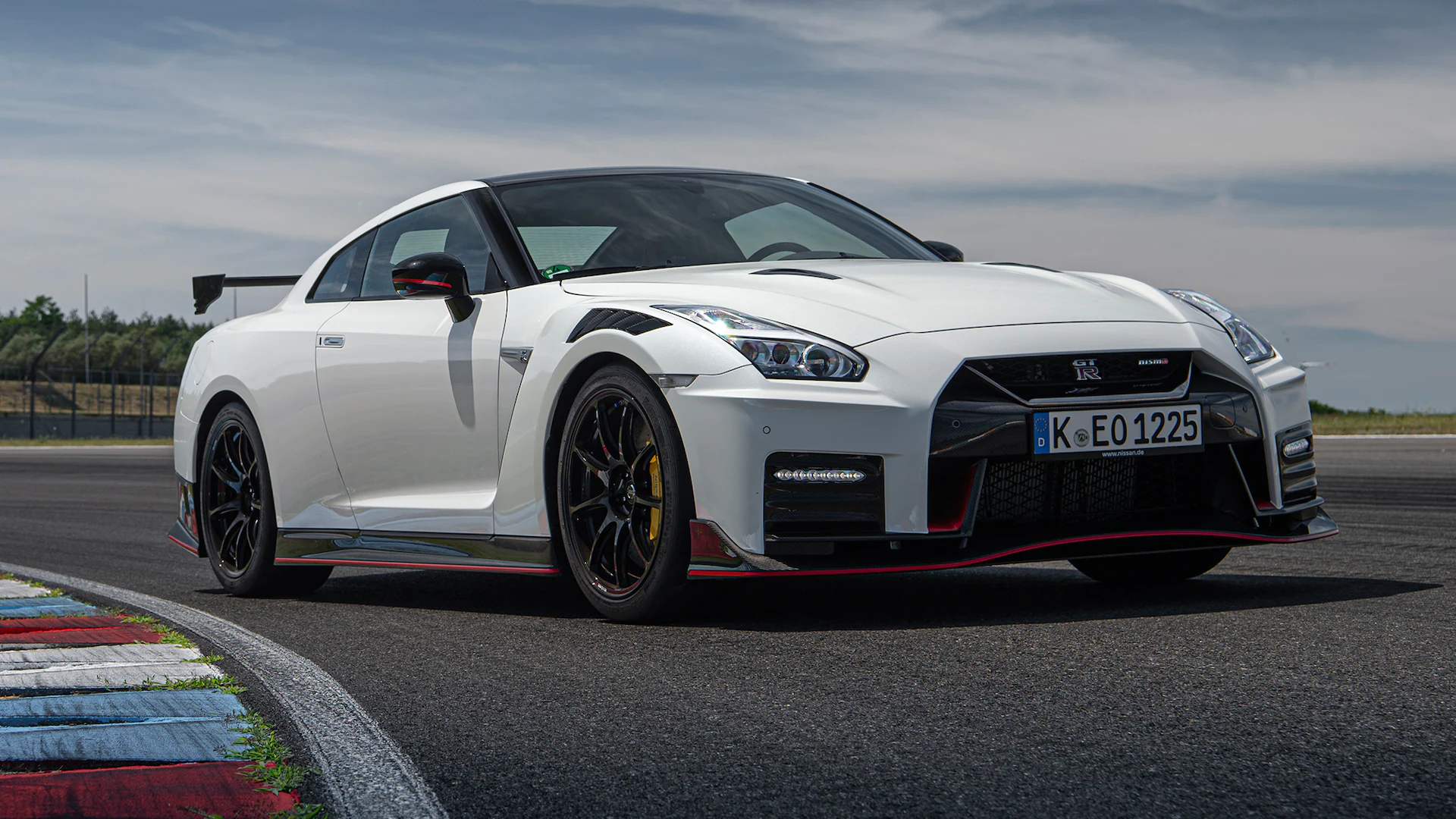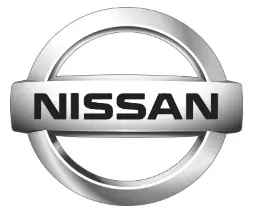Nissan GT-R 2020
The Nissan GT-R 2020, also known as the GT-R Nismo, was introduced as the latest iteration of Nissan’s high-performance sports car. Renowned for its exceptional performance and cutting-edge technology, the 2020 GT-R Nismo brought several updates and enhancements. Here are some key features and improvements of the 2020 GT-R Nismo:
- Design: The GT-R Nismo 2020 featured an aggressive and aerodynamic design, optimized for enhanced performance. It showcased a bold and muscular exterior with a distinctive V-motion grille, enlarged air intakes, carbon fiber accents, and an imposing rear wing. The design elements were carefully crafted to improve aerodynamics, stability, and cooling.
- Powertrain: The GT-R Nismo 2020 boasted a hand-assembled 3.8-liter twin-turbocharged V6 engine. It delivered an impressive 600 horsepower and 481 lb-ft of torque, providing exhilarating acceleration and breathtaking top speeds. The engine was mated to a dual-clutch six-speed automatic transmission, offering lightning-fast gear shifts.
- Performance: The GT-R Nismo 2020 incorporated advanced performance technologies to push its capabilities to the limit. It featured an advanced all-wheel-drive system with a torque-split controller for optimal power distribution. Additionally, it included a Nismo-tuned suspension, Brembo® carbon-ceramic brakes, and a refined aerodynamic package for improved downforce and stability.
- Technology: The 2020 GT-R Nismo offered a range of advanced technology features to enhance the driving experience. It included a comprehensive infotainment system with a touchscreen display, navigation, Bluetooth connectivity, and a premium Bose audio system. The vehicle also incorporated features like customizable driving modes, a performance data logger, and a sophisticated launch control system.
- Interior: The GT-R Nismo 2020 provided a driver-focused and luxurious interior. It featured high-quality materials, Alcantara-trimmed seats, carbon fiber accents, and a sporty steering wheel. The cockpit was designed to optimize ergonomics and provide easy access to essential controls, allowing the driver to focus on the road.
- Safety: While the GT-R Nismo 2020 was primarily focused on performance, it still prioritized safety. It included essential safety features such as a reinforced body structure, advanced airbag system, traction control, and stability control to ensure driver and passenger safety.
These are some of the key features and improvements of the Nissan GT-R Nismo 2020 model. For more specific details and to explore the available options and configurations, I recommend visiting Nissan’s official website or contacting a Nissan dealership for the most accurate and comprehensive information.
PRECAUTIONS BEFORE DRIVING
VEHICLE DYNAMIC CONTROL (VDC) OFF MODE
Always make sure the VDC is ON before driving the vehicle by checking that the VDC OFF indicator lights on the meter and the VDC set-up switch are not illuminated. The GT-R is a high-performance vehicle and the VDC must be on/activated to provide proper powertrain operation and intended drivability.
WARNING
- The VDC OFF mode should ONLY be used briefly to help free the vehicle if stuck in snow or mud by temporarily stopping the operation of the VDC to maintain wheel torque.
- Driving the GT-R with the VDC off may lead to handling issues related to steering maneuvers, acceleration, or deceleration. Moreover, driving with the VDC off can result in an inoperative vehicle by causing serious damage to the powertrain, including damage to the Transaxle Assem-bly including the Transfer, Clutch, Gears, Transaxle case and all of its components and other drive-train components (s) by overheat-ing or excessive force.
- Damage to the powertrain or any drivetrain component(s) that occurs when there is a record in the Vehicle Status Data Recorder (VSDR) that the vehicle was driven with VDC off during the period when the damage was incurred is excluded from warranty coverage.
See your 2020 Warranty Information Booklet for important related information and warranty coverage exclusions. See also section 2 ( “Transmission warn-ing light” page 2-31) and section 5 ( “Vehicle Dynamic Control (VDC) system” page 5-53) of this Owner’s Manual, “Transmission Clutch Temperature High” and “Vehicle Dynamic Control (VDC) System” for important additional related information.
SUMMER TIRES
The GT-R summer tires are made from specially formulated rubber to maximize the vehicle’s performance capabilities. The performance of summer tires is substantially reduced when temperatures are less than 32°F (0°C) so you must drive carefully. NISSAN recommends the use of winter or all-season tires on all four wheels if you plan to operate your vehicle in snowy or icy conditions when temperatures are less than 32°F (0°C).
WARNING
Never use summer tires when the temperature is below −4°F (−20°C) to prevent permanent tread deformation which may cause tire damage or tire failure. This may cause a loss of vehicle control which can result in serious personal injury or death.
ALL-SEASON TIRES
Do not exceed the speed rating of the tire that is installed on the vehicle.
AVOIDING BODY DAMAGE
The GT-R bumper, fascia, side sills and undercarriage are close to the ground. Drive slowly on rough or uneven roads to avoid damaging these parts. Pay careful attention to wheel blocks and curbs. If the front bumper contacts a wheel block, curb, etc., the bumper and underlying parts may be damaged or cracked. Be careful not to damage the front spoiler that is installed below the engine room.
FUEL
NISSAN recommends using fuels that contain no alcohol. However, fuels containing up to 10% alcohol may be used, if necessary. Do not use E-15 or E-85 in your vehicle. ( “Fuel information” pages 9-4)
NOTICE
To avoid serious engine damage due to increased cylinder temperatures, do not use fuels that contain more alcohol than indicated in
“Gasoline containing oxygenates” page 9-5. Also, do not use fuel additives, fuel stabilizers or fuel de-icers that contain alcohol.
BODY REPAIR
The body of the GT-R has been manufactured on special fixtures utilizing a hybrid structure with aluminum die-cast parts for the frame work. Special skills, information and equipment are required to correctly repair the body. It is recommended you contact a GT-R certified NISSAN dealer if the vehicle is damaged, such as in a collision, and they will recommend an appropriate body shop.
Only certified body shops using CELETTE® advanced collision repair equipment are approved by NISSAN for repairing structural body damage. It is recommended you contact a GT-R-certified NISSAN deal-er or NISSAN Consumer Affairs for a referral or list of certified body shops.
DRIVING AFTER REPLACING TIRES
Avoid the driving conditions listed under “Additional maintenance items” in this section for 48 hours after tires are installed on the wheels ( “Additional maintenance items” page GTR-13). The tire may slip on the wheel if the vehicle is driven in these conditions before 48 hours have passed. If the tire slips on the wheel, the wheel/tire assembly will be out of balance and will require rebalancing.
ADDITIONAL MAINTENANCE ITEMS
The information and specifications in this section apply only when engaging in performance driving.
The following information applies only if you engage in performance driving such as driving your GT-R for extended periods under the following conditions.
- Higher-RPM (approaching redline) operation
- Frequent high pedal force braking from moderate and higher speeds
- Frequent throttle activation
- Fast revving throughout the RPM range
In such cases, the following additional maintenance guidelines apply.
However, you should also carefully read your 2020 NISSAN GT-R Warranty Information Booklet for important information concerning warranty coverage, limitations and exclusions.
We recommend that all GT-R maintenance be performed at a GT-R-certified NISSAN dealer. NISSAN will only pay for GT-R Performance Optimization Services performed at a GT-R certified NISSAN dealer.
PRECAUTIONS ON PERFORMANCE DRIVING
The information and specifications in this section apply only when engaging in performance driving.
Checking the temperature of the
coolant and oils on the touch
screen display
When the temperatures of the engine coolant and oil, and the oil pressure exceed the normal range, the color of the multi-function meter on the touchscreen display changes to red to warn the driver. When engaging in high-performance driving, switch the display to the multi-function meter to display the temperature of the engine coolant and oil, and the oil pressure. When the color of the meter display changes to red, perform cool-down driving. When the values of the temperature and pressure return to the normal range, the color of the multi-function meter will turn back to white.
Warning temperature:
- Engine coolant temperature is 230°F (110°C) or higher:
If the engine coolant temperature increases above 230°F (110°C), the color of the multi-function meter on the touchscreen display changes to red to warn of a possible overheating condition and engine output is reduced. - Engine oil temperature is 275°F (135°C) or higher:
If the engine oil temperature is higher than 275°F (135°C), the meter display changes to red, the maximum engine speed is automatically limited to 4,000 rpm, and the transmission automatically change from the position to the position. - The transmission oil temperature is 284°F (140°C) or higher:
If the transmission oil temperature increases to over 284°F (140°C), the color of the meter display changes to red. However, the vehicle can continue to be driven until the temperature reaches 295°F (146°C). If the oil temperature exceeds 284°F (140°C) while driving (the color of the meter is displayed in red), change both the transmission oil and the differential oil after driving because these fluids have deteriorated because of the heat.
Cool down
The information and specifications in this section apply only when engaging in performance driving.
Cool down the vehicle to help extend its life of the vehicle if coolant temperatures are extremely high. Drive the vehicle at 37 to 50 MPH (60 to 80 km/h), in 5th or 6th gear for 2 to 3 miles (3 to 5 km) and then stop the engine.
Refueling precautions
WARNING
Do not attempt to top off the fuel tank after the fuel pump nozzle shuts off automatically. Continued refueling may cause fuel overflow, resulting in fuel spray and possibly a fire. The fuel tank is full at the first automatic shutoff.
To maximize vehicle performance, the fuel tank is located as low as possible to lower the vehicle’s center of gravity. The tank is also divided into two parts. This fuel tank design causes higher pressures inside the tank than other vehicles so fuel spillage is possible by trying to top off the fuel tank after automatic shutoff.
The fuel tank pressure is higher when the vehicle is hot, especially if the tank is more than half full. If the cap is opened when the vehicle is hot, it may cause fuel spray and there may be a hissing noise. Open the cap slowly, releasing the pressure from the tank gradually. Also, if the vehicle is refueled when the vehicle is hot, the fuel pump may automatically shut off before the tank is full. This does not indicate that there is a malfunction. Refuel slowly or refuel after the vehicle has cooled.
2024 Nissan GT-R Specs, Price, Features, Mileage (Brochure)
Reference Link
Download Manuals: https://www.nissanusa.com/owners/ownership/manuals-guides.html


